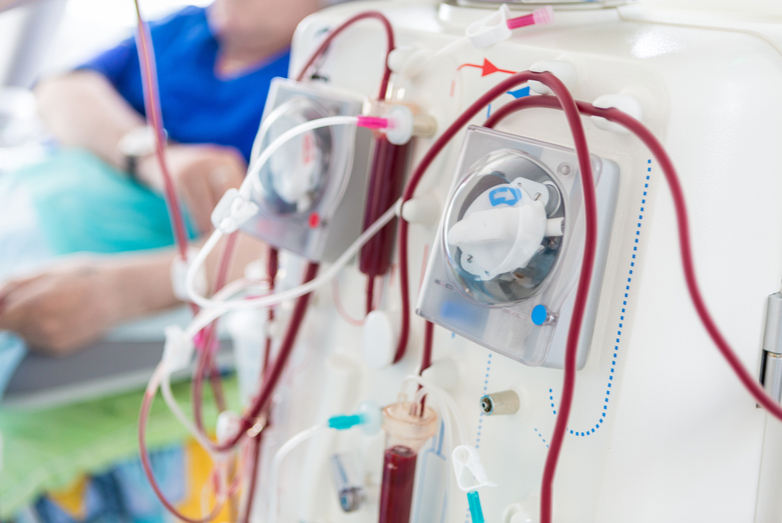In 2016, there were more than 500,000 patients who received dialysis, while over 200,000 people lived with a kidney transplant. Dialysis is used to treat chronic kidney disease (CKD), which affects an estimated 37 million people in the US.
In addition, 1 in 3 American adults (that’s around 80 million people) are at risk for developing CKD. Furthermore, 90% of people with CKD don’t even know they have it. In its earliest stages, chronic kidney disease does not require dialysis. You only need dialysis in the event of end-stage renal disease or kidney failure – which is the result of ongoing or untreated CKD.
Chronic kidney disease occurs as a result of damaged kidneys that are no longer functioning properly to keep you healthy. In its earliest stages, kidney disease has no side effects. Yet, as the disease worsens toxins build up in your blood, leading to more noticeable symptoms such as high blood pressure, weak bones, anemia, poor nutritional health, and nerve damage.
Your kidneys are an important part of your overall health and are vital to the function of so many different systems throughout your body. CKD increases your risk for heart disease, as well as blood vessel disease. These problems may come on slowly but over time they can lead to kidney failure. At this point, dialysis or a kidney transplant becomes necessary to stay alive. This stage of kidney disease is known as end-stage kidney disease, or end-stage renal disease.
How Many People Are Impacted?
Around the world, it is estimated that there are 2 million patients impacted by end stage renal disease.
While an estimated 15% of American adults have CKD, most have no idea they have it. It is estimated that 1 in 2 people have very low kidney function and remain unaware.
If you have diabetes or high blood pressure, you are at a greater risk of developing CKD. In fact, 1 in 3 adults with diabetes develop CKD, while 1 in 5 adults with high blood pressure have CKD.
In the year 2016, there were 726,331 Americans that required dialysis or a kidney transplant to stay alive. A large percentage of these people, 500,000 to be exact, underwent dialysis three times per week to replace kidney function.
In 2016, 125,000 people received their first end-stage kidney disease treatment.
Kidney Transplants
In 2018, 21,167 people received a kidney transplant, and 1/3 of these transplants came from living donors. Yet, 215,000 Americans were on the waiting list to receive one. Sadly, 12 people die every day waiting for a kidney transplant.
To make matters worse, 3,500 kidneys are surgically discarded every year despite efforts to utilize more of these kidneys to save lives.
Most Common Risk Factors for CKD:
- Diabetes
- High blood pressure
- A family history of kidney failure
- People 60 and older
- Obesity
- Heart disease
- Past kidney damages
What About Children with Kidney Disease?
Some children and adolescents have conditions that put them at risk of developing CKD. For instance, four percent of America’s youth between 12 and 19 years old have hypertension, and 10% have elevated blood pressure – both of which increase their risk for CKD.
As of 2016, there were 5,700 children living with end-stage kidney disease (ESKD).
In 2018, 755 children underwent a kidney transplant and over 1,000 children were waiting for a donated kidney.
Need a Ride to Dialysis?
At Stellar Transportation, we understand the importance of making it to all of your scheduled dialysis appointments to protect your health and overall wellbeing. After all, we specialize in providing transportation to dialysis treatments and offer special discounts to patients requiring 3 rides per week.

